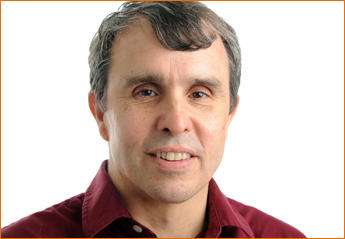Revolutionary New Microscope: Real-time Movies of Molecules

The roiling muscle contractions in a C. elegans embryo. A white blood cell sailing through collagen.
Using a new form of the much-hailed light sheet-based fluorescence microscopy (LSFM), a new microscope makes visible— via stunning movies—biological processes once deemed invisible: sub-cellular activity.
LSFM approaches generally have “begun to revolutionize microscopy of live specimens,” Buchmann Institute for Molecular Life Sciences Vice-Director Ernst Stelzer told Bioscience Technology. Uninvolved in the recent Science study on the new approach—“lattice light sheet microscopy" -- Stelzer said that LSFM “allows one to work with specimens in entirely different and truly novel experiments.”
In this new approach, Howard Hughes Medical Institute investigator— and 2014 Nobel Prize winner— Eric Betzig finessed an idea by the University of Freiburg's Alexander Rohrbach. That idea was to use ultra-thin light sheets in microscopy--in Betzig's hands, by dividing one beam into seven. This minimizes light damage and maximizes resolution, letting researchers view thin specimens of one-to-two cell layers. “These can be observed with a resolution that is comparable to that of a confocal fluorescence microscope, but for a considerably longer time period,” said Stelzer. “It combines LSFM and— not in detail but in concept— coherent structured illumination (SIM). It addresses the thickness of the light sheet by replacing the Gaussian beam with interfering Bessel beams. Since LSFM uses cameras, it records up to hundreds of images per second.”
RELATED: Nobel Winner's Lab Combines Stars, Eyes with Microscopy
 Translation? It’s a breakthrough. “The paper should be of interest to all physicists who work on quantitative biology,” Stelzer said. “Since LSFM exposes a specimen to orders of magnitude less light, the specimen remains viable for a considerably longer period of time than in a confocal fluorescence microscope. Chances are much higher that the specimen actually survives the imaging process. LSFM has a dramatic impact on the modern life sciences, since large, multi-cellular specimens, i.e., specimens that resemble the complex structure of tissues, can be observed under close to natural and physiologically relevant conditions.”
Translation? It’s a breakthrough. “The paper should be of interest to all physicists who work on quantitative biology,” Stelzer said. “Since LSFM exposes a specimen to orders of magnitude less light, the specimen remains viable for a considerably longer period of time than in a confocal fluorescence microscope. Chances are much higher that the specimen actually survives the imaging process. LSFM has a dramatic impact on the modern life sciences, since large, multi-cellular specimens, i.e., specimens that resemble the complex structure of tissues, can be observed under close to natural and physiologically relevant conditions.”
A bit of a shock
Betzig encountered many surprises in the course of his research. “The biggest surprise I guess was how well it worked from the perspective of photo-toxicity,” he told Bioscience Technology. “The fact that we could obtain 1,000 3-D-image volumes from a single dividing cell, without having it arrest midway through mitosis, was a bit of a shock.”
Furthermore, Betzig said: “Although we developed this as a tool for high-speed live imaging, one of the unexpected benefits is that it has proven to be a really good tool for studying single molecule diffusion in live specimens, and extending super-resolution localization microscopy in fixed ones.”
From development to disease
Betzig’s 2014 Nobel Prize in chemistry was for an approach, called “single molecule microscopy," that offers a limited view inside cells. Essentially, Betzig turned on select fluorescent molecules in a living sample, leaving others dark. He marginally shifted focus to nearby fluorescent molecules, and repeated. He showed that by superimposing the on/off images of each set of molecules, he could paint a light picture of a portion of an inner cell.
This represented an advance over standard light microscopy, which allows only the outside of cells to be viewed— not what goes on inside. Electron microscopes can go further, but not without killing the cells, so nothing inside the cells can be viewed in action. Betzig’s Nobel-winning work allowed inner views of cells— without killing the cells.
The problem: the approach only works well when the specimens are not moving rapidly. Measurements can’t be taken fast enough to allow high-resolution filming of rapid processes like mitosis. Betzig has said it was like trying to understand a football game by viewing a few stills.
Live action replays
So he set out to make live-action replays. As Stelzer noted, Betzig relied on advances in light-sheet microscopy, which was already being used to image single cells in embryos. As standard light sheets are too thick to work in subcellular imaging, Betzig’s team used light beams called 2-D optical lattices. These generate extremely thin light sheets that increase the speed at which images can be taken. The 2-D optical lattices also disperse light energy, so intensity in any given place is reduced— and damage minimized. All this allowed Betzig to capture unprecedented images of fragile, sub-cellular biological specimens at rapid speed, in high resolution, in real time.
RELATED: Imaging and Analysis with Flying Colors: Part One
Betzig told Bioscience Technology he was inspired by Stelzer, whose work combined the century-old art of plane illumination with fluorescence microscopy. Stelzer’s group was the first to build, patent and publish a diffraction-limited laser light sheet-based fluorescence microscope. Stelzer told Bioscience Technology the LSFM technology Betzig built on has generated 300 publications. It offers “true optical sectioning over an extended field of view” that “reduces the energy load on a specimen by two to four orders of magnitude.” Photo bleaching and photo-toxic effects are “dramatically reduced [and] fish and insect embryos, plants, and spheroids survive the taking of millions of images.” Finally, he said, “specimens can be prepared with new methods, their 3-D structure can be sustained, and they can be observed in previously impossible experiments."
With his new approach, Betzig’s team has already traced brain neurons to and away from their synapses, watched fertilized eggs grow, and tracked wayward proteins as they hurtle toward disease. They have created movies of 20 different biological systems in action— and counting.
Already moving on
Unsurprisingly, this restless director of molecular films is already moving on.
“Next is to combine our adaptive optics (AO) technology with the lattice technology,” Betzig told Bioscience Technology. The idea is to “extend high-speed, noninvasive 3-D sub-cellular imaging to cells deep within multicellular organisms.”
Biologists are generally moving “closer to more relevant biological experiments,” and, at long last, “away from cells that are simply cultivated on cover slips,” concluded Stelzer.

